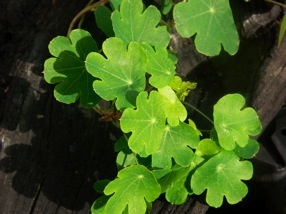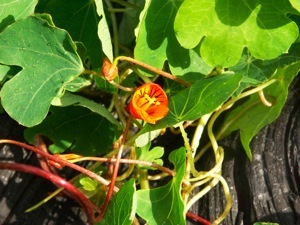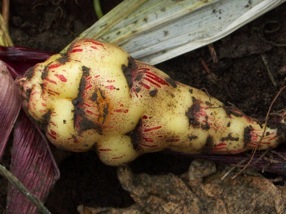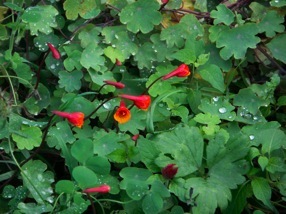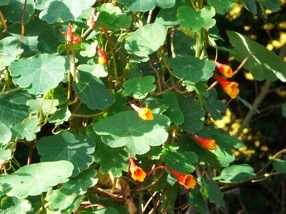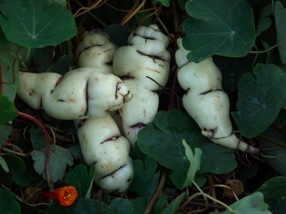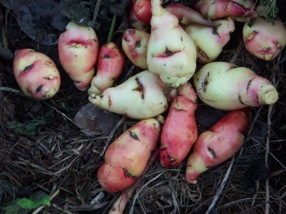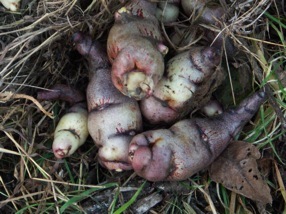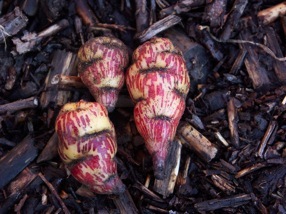
Mashua
Some people say very nasty things after eating a little bit of mashua, others say, hmmm, nice, and go on nibbling it.. Yes, it’s a bit controversial, tubers have a strong, sharp, radish-ginger and whatever more taste, I tend to be more on the ‘I like it’ side, certainly after cooking. I never tried the old Andean trick of ‘ boiling and afterwards freezing’ method, and eating the frozen tubers, it is said to be a whole other taste experience. In his wonderful book ‘les légumes’ (I don’t think this has been translated from French, someone should do this one day), Désiré Bois mentions seeing this practice in the Andean highlands, frozen tubers were sold on markets and these were wrapped in thick layers of wool to keep them cool , this was recorded around 1910-1920.
The controversy about the edibility certainly doesn’t pop up when people see the plants or even the spectacular looking tubers. Mashua grows big, give it a sturdy 2 metres support and it will happily crawl over it, and it might well end up a bit further. Or use it as a ground cover, smothering lots of weeds on its way, and forming roots on spots where it touches the soil, if you’re lucky, you could well end up with some tubers forming on these places as well.
Mashua is often sold as an ornamental plant, even grown in pots. The only variety really suited for this is Ken Aslet, which is the earliest flowering and tuber producing variety. Other varieties have flowers that are as pretty, but flowering only begins very late in the season (November). And, to cool down some enthousiasm, they’re frost-tender...
Mashua (Tropaeolum tuberosum) likes a nice spot in the sun, but it isn’t too happy in very hot and dry summers. And, no , it’s not too fussy about soil conditions, it likes some nutritients to grow well, but that’s just about it. But when do they produce anything, someone asked me once, after he dug out the roots in September? Obviously , this was the problem, they only start producing from September or even October on, it depends a bit on the variety , Ken Aslet being the earliest (but production is quite low), later producers usually have bigger crops, up to some kilos each plant!
Dig the tubers after the frost (they size up for a few weeks, even after the plants have been frozen, but just beware of severe frosts and mice), place them in a conservation room, and try to retain their moisture by putting them in a pot with (dry) potting earth, paper bags, or use the traditional Andean method: place them on a layer of sand and cover the tubers with straw or hay.
Don’t water them, they will begin forming roots immediately, and you could end up with a nice looking young plant in January.
A word of caution here: don’t eat too much mashua, it has an effect on male hormones....If you really exaggerate, you could become impotent.

